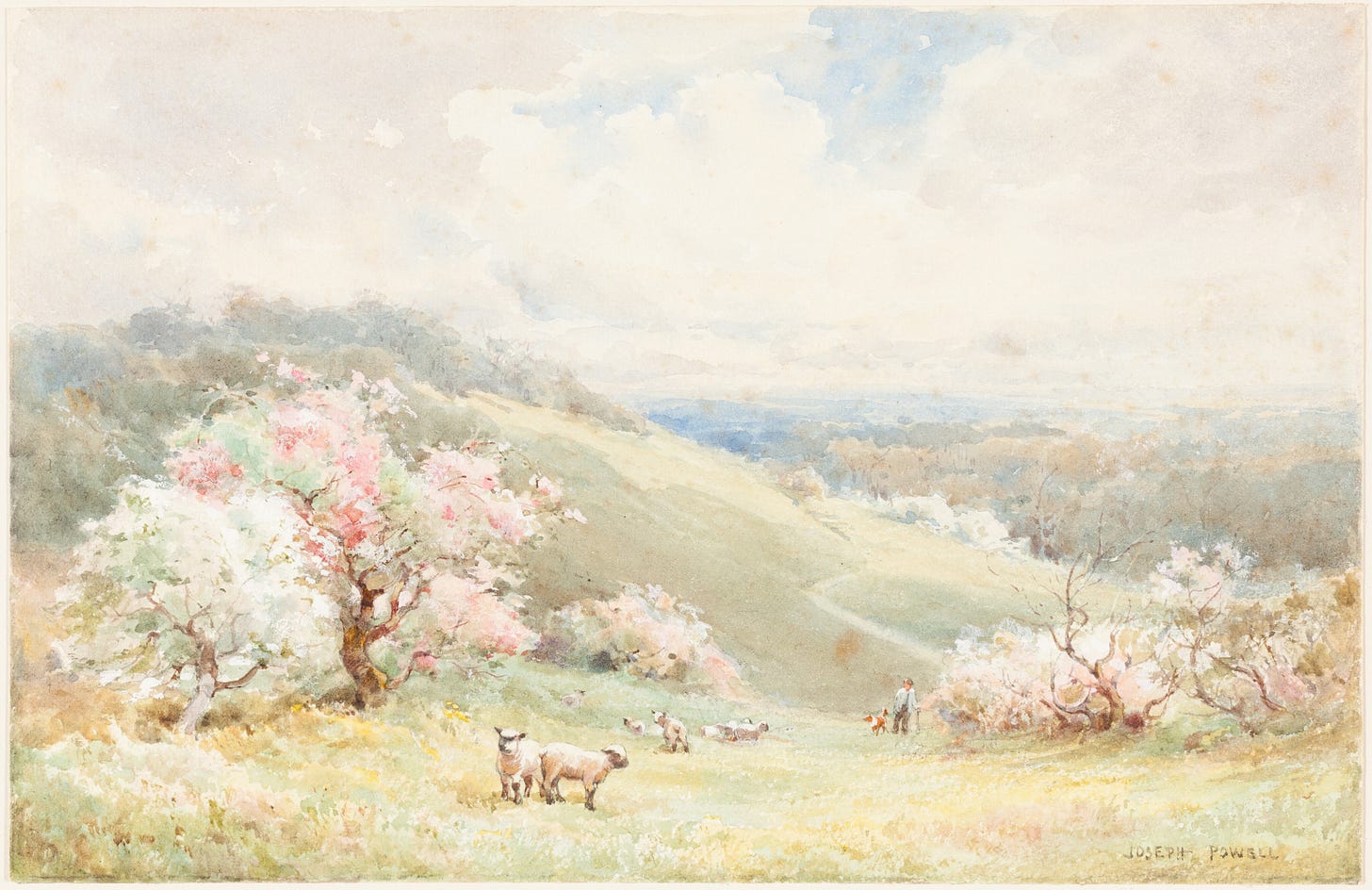[Image: “Spring,” Joseph Rubens Powell (active 1835-1871), Courtesy of National Gallery of Art, Washington, DC, gift of John Nichols Estabrook and Dorothy Coogan Estabrook. From NGA’s Wikimedia Commons collection & in the public domain.]
Happy fault: A technical glitch has kept me from using email on my phone for the last couple of weeks. Yet I still get through responses at about the same rate as ever—maybe faster, since I am now no longer trying to compose email while also walking or cooking or minding kids at the playground—which last is where I’ll most likely be when you’re reading this.
If you’re still waiting on a response from me, I promise to get to it soon. I just have to mind my kids at the playground first.
Also, there won’t be a Wednesday post next week. This is not because I’ve turned my attention away from this project. Far from it. For one thing, more reading is called for. (More reading is always called for.) And making the space for this research is deeply necessary. In a time when life seems unavoidably to drain our attention away from us, it’s a joy to have good reasons to turn away from all that distraction, goods to turn toward instead. It’s a joy to do sustained thinking about a concept that weaves together so many diverse yet related threads. It’s one more way of focusing, to borrow Casey Cep’s elegant phrasing from her recent article on monasticism and attention, “beyond the question of why the mind wanders to the more difficult, more beautiful question of where it should rest.”
Imagine, too, actually resting. As Lent approaches, space and silence especially seem to beckon. If there is any hope these rare guests might be planning a visit, I want to be sure I’m around when they knock.
So for all these reasons I want to slow down and spend a little more time here talking about the spiritual texts and traditions that influence contemplative realism. Hence, more reading (really re-reading and re-re-reading). I am not leaving out of count the possibility, or certainty, that some readers of this series of essays will be those who read from different spiritual traditions than I do. So I’m not starting with the assumption of any common knowledge in mind. I will explain things some of you might not need explained. I will lean on the words of others where they explain things I don’t understand all that well myself. We might not move very fast through this part. It certainly won’t be able to say all there is to be said. I hope you’ll stay with the series anyway, feel free to skim or skip whatever it is you don’t seem to need now, and take with you whatever you find of value.
As I keep hearing, too, of reader wishes for more practical discussions of craft & style, after Easter let’s plan to take a turn in those directions. Next month I’ll be working on a series of craft talks for a workshop I’m giving this summer, plus another exciting related project, so these topics are much on my mind. All your notes and comments are of particular help to me in trying to say what wants to be said.
While we start to turn our thoughts in these varied directions, you might enjoy listening to this podcast episode, which reminds us that “the truly spiritual is always more invitingly and demandingly mysterious than it is ambiguous”: https://faith-and-imagination.castos.com/podcasts/19294/episodes/contemplative-realism-a-theological-aesthetical-manifesto-with-guest-joshua-hren-wiseblood-books-and-university-of-st-thomas-houston




